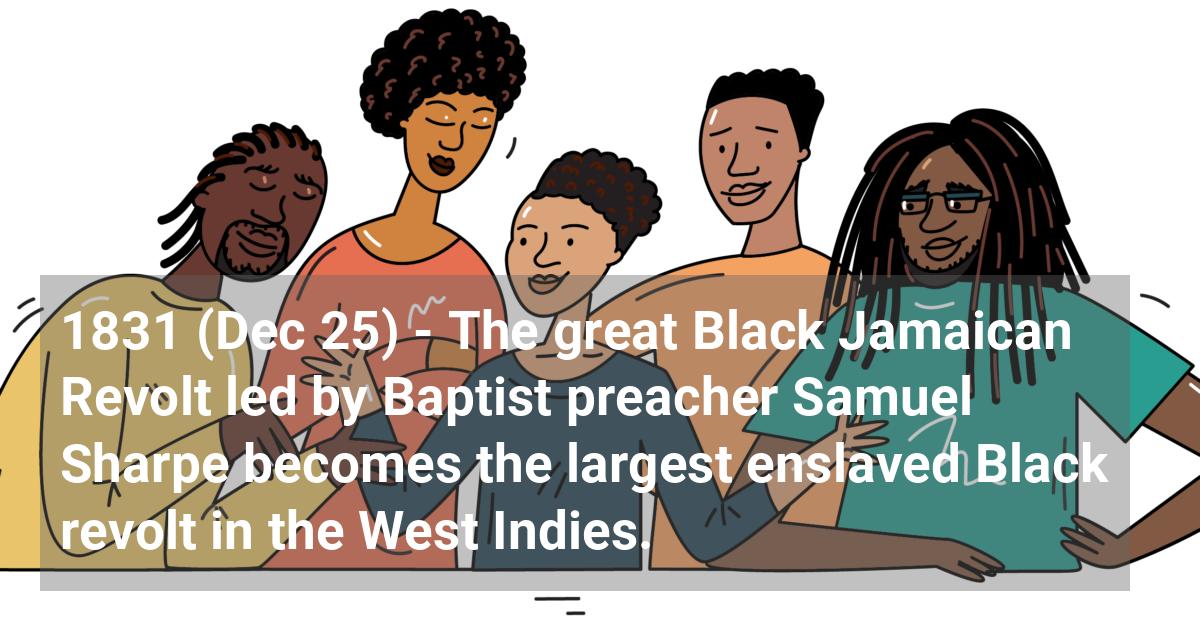Home / Full timeline / The great Black Jamaican Revolt led by Baptist preacher Samuel Sharpe becomes the largest enslaved Black revolt in the West Indies.
 The great Black Jamaican Revolt led by Baptist preacher Samuel Sharpe becomes the largest enslaved Black revolt in the West Indies.
The great Black Jamaican Revolt led by Baptist preacher Samuel Sharpe becomes the largest enslaved Black revolt in the West Indies.
1831 (Dec 25)
Also known as the Baptist war, the Christmas Rebellion, and the Sam Sharpe Rebellion. This eleven-day rebellion led by Baptist deacon Samuel Sharpe, involved up to 60,000 enslaved Blacks (one fifth of the total enslaved Black population) in the colony of Jamaica. The rebels had been paying close attention to the abolitionist movement in London. Thomas Burchell, a white Baptist missionary in Montego Bay working to help liberate the enslaved, went to London for Christmas vacation. The enslaved Africans expected he would return with papers for emancipation from the king, William IV. The Jamaican governor announced however, that no emancipation had been granted. Demanding more freedom and higher wages, they decided to peacefully boycott working the plantations until their demands were met. The rebellion exploded on Dec 27th when the rebels set fire to Kensington Estate, causing the colonial authorities to institute martial law and summon Jamaican maroons to help suppress the revolt and they succeeded. About 500 enslaved Blacks were killed in total, with about 200 killed during the revolt and over 300 killed in various forms of judicial execution by the Jamaican government in many times for minor offenses (one recorded execution was for the theft of a pig; another a cow). Suspecting many white missionaries of encouraging the rebellion, some were arrested, tarred, feathered, and later released. Groups of white colonials destroyed Black churches. Historians argue that the brutality of the Jamaican plantocracy during the revolt accelerated the British political process of emancipating the enslaved Blacks. When a few white missionaries described how badly they were treated by the colonial militias, the House of Commons expressed their outrage that white planters could have tarred and feathered white missionaries. Parliament passed the Slavery Abolition Act of 1833 for initial measures to begin in 1834, followed by partial emancipation (outright for children six or under, six years apprenticeship for the rest) in 1834 and then unconditional emancipation of chattel slavery in 1838.
